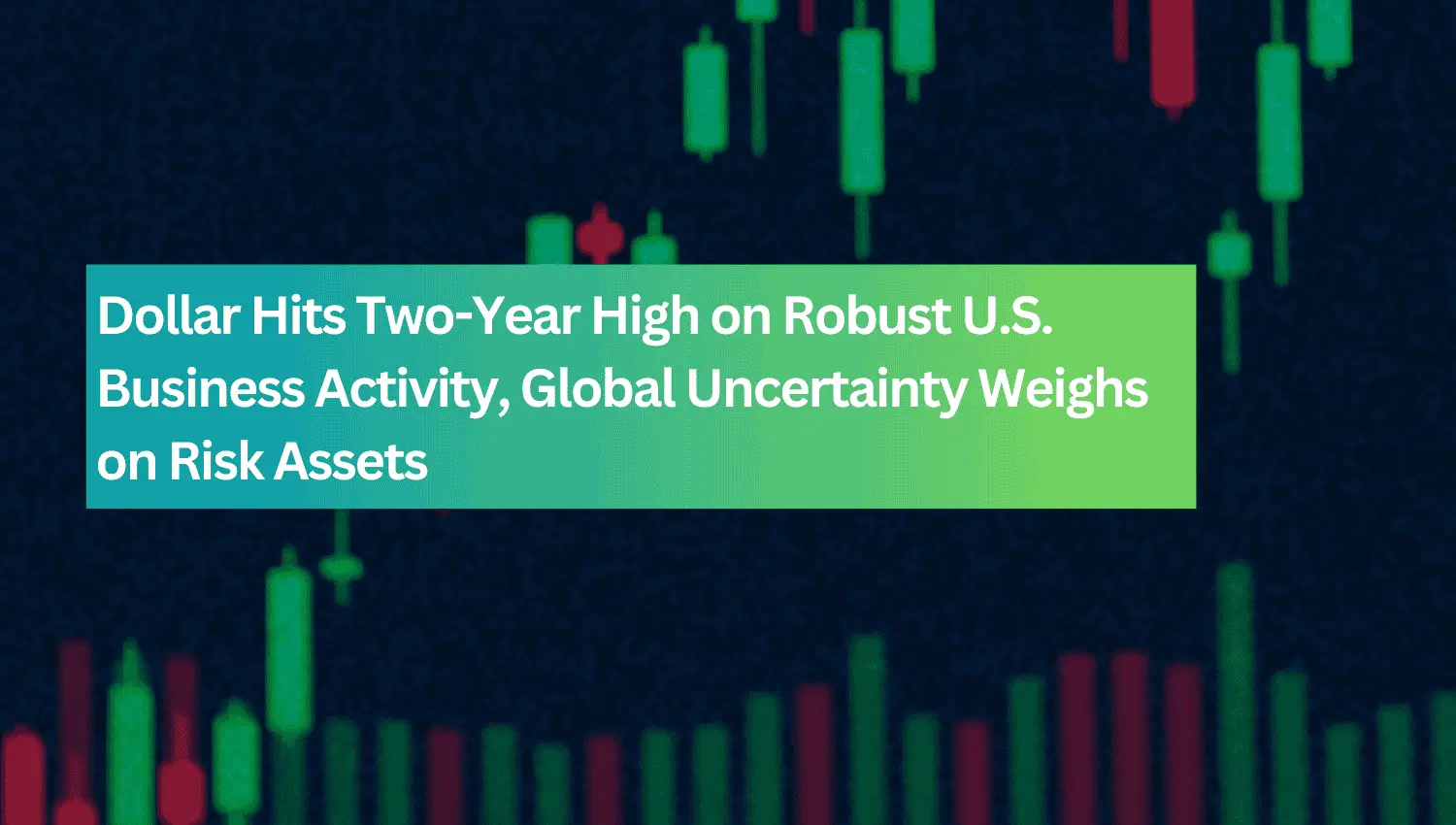Dollar Strengthens on Solid U.S. Economic Data

The dollar index briefly reached a two-year high on Monday, driven by robust U.S. economic data that highlighted resilience in the face of global uncertainty. The U.S. Composite PMI Output Index climbed to 55.3 in November, supported by strong services sector performance. This upbeat data reinforced confidence in the U.S. economy and supported moderate gains in the S&P 500, with industrials and consumer discretionary stocks leading the rally. Treasury yields saw mixed movements, with the 2s-10s curve steepening by 2 basis points to +16.5bp. Meanwhile, gold gained on haven demand, and oil prices surged due to escalating tensions in the Ukraine-Russia conflict.
Geopolitical Risks and Central Bank Policies Add Complexity
Market sentiment remains clouded by heightened geopolitical tensions, including continued missile testing by Russia. These risks have elevated safe-haven flows into assets like gold and the yen. In Europe, weak PMI data and ongoing labor disruptions at Volkswagen highlighted structural challenges for the euro zone economy. The European Central Bank (ECB) maintained a cautious approach to rate cuts, adding some stability to the euro. In the U.K., contractionary PMI readings reflected growing economic headwinds, weighing heavily on the pound. Central bank policy adjustments, particularly from the Federal Reserve and the ECB, are expected to play a pivotal role in shaping near-term currency and commodity dynamics.
Currency Market Movements: Euro and Pound Under Pressure
Euro: Fell to a two-year low before partially recovering, pressured by weak euro zone PMI readings and labor strikes at Volkswagen. Growth concerns and sluggish sentiment weighed on the currency.
Pound: Dropped to a six-month low as contractionary PMI data underscored worsening economic conditions in the U.K.
Swiss Franc: Weakened following dovish comments from Swiss National Bank Chairman Schlegel, who suggested the possibility of reintroducing negative rates.
Yen: Gained modestly, benefiting from geopolitical risk and safe-haven flows.
Australian Dollar: Declined, hurt by weaker commodity prices and the strengthening dollar.
Commodities: Gold Rises While Copper Declines
Gold: Benefited from haven demand amid geopolitical risks and global uncertainty.
Oil: Surged on supply concerns tied to intensifying Ukraine-Russia tensions.
Copper: Retreated under pressure from dollar strength and weak European sentiment, reflecting concerns about slowing industrial demand.
Outlook: Dollar Dominance to Persist Amid Geopolitical and Economic Divergence
Dollar: Expected to maintain its upward trajectory, underpinned by strong U.S. data and relative economic resilience.
Euro: Faces continued downside risks from growth concerns and labor disruptions, though cautious ECB policy may offer some stabilization.
Pound: Likely to remain under pressure due to weak domestic data and deteriorating economic conditions.
Commodity-Linked Currencies: Australian dollar and other resource-dependent currencies are vulnerable to softening global demand and a firm dollar.
Safe-Haven Assets: Gold and yen may remain in favor as geopolitical tensions persist and risk aversion dominates.
Markets will closely monitor Friday’s global PMI readings, geopolitical developments, and central bank signals for further insights into macroeconomic and market trends.

